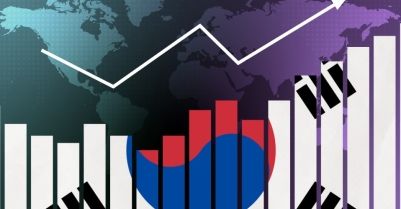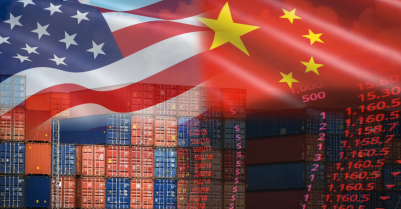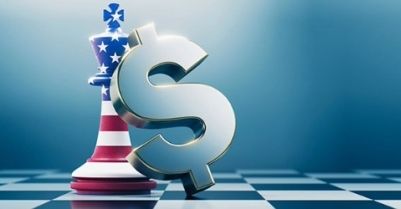-
View article
 #Economy
#EconomySouth Korea: a year after the political crisis, markets are buying the promise of stability
2025/12/17
- #Eco-trends
- 2020/03/24
- 0
-
9
COVID-19: Desperate times call for desperate measures

Under normal circumstances, economic agents are theoretically able to logically and rationally infer future economic states. These often linear projections, which simply extrapolate past trends or experience, sit within a structured universe of representations and beliefs that anchor economic expectations. An irrational element remains, however, born of the spontaneous need to act summed up by John Maynard Keynes in his famous reference to “animal spirits”*. In any event, trust remains the foundation for all key decisions necessary to the smooth running of the economy and market stability.
However, when an extraordinary shock at the limits of probability occurs, prevailing beliefs and conventions abruptly collapse, trust evaporates and we are plunged into a world where the irrational becomes the new rational, while anxiety and fear rule amid crippling uncertainty.
The coronavirus crisis is just this kind of moment, bringing an unprecedented global triple shock to public health, the economy and the financial system. It is first and foremost a shock to public health, unleashing a lethal pandemic upon a globalised, interconnected world where the virus can circulate quickly, putting health systems under pressure. Second, on the economic front, drastic lockdowns – the only effective defence against the spread of the virus – are bringing economic activity to an abrupt standstill, with combined demand and supply shocks propagating across national borders by jamming up international trade. Lastly, on the financial front, with economies paralysed indefinitely, markets are anticipating a global recession and the accompanying wave of corporate defaults in a world already overburdened with debt, to the point where fears of disorderly unwinding are plunging the economy and the financial world into a depressive vicious circle. The fact that market hubris had driven asset valuations up to excessive levels means the correction is all the more abrupt and severe. Over the past few days, this financial pendulum swing has triggered an abrupt decline on stock markets, a sharp rise in risk premiums and high levels of volatility, with investors swept up in an across-the-board, every-man-for-himself stampede into the safest and most liquid high-quality assets. This sought-after and supposedly plentiful liquidity has evaporated in risky market segments, with wave after wave of distress sales of assets failing to find buyers even at knock-down prices.
In the face of this multidimensional crisis, there is an urgent need to meet the challenges of liquidity and solvency to prevent this temporary shock from having lasting consequences. On the liquidity front, central banks are manoeuvring to keep the financial wheels oiled and prevent both bank and market funding mechanisms from seizing up. Each has its own preferred approach: in a still highly intermediated economy, the European Central Bank is, as one would expect, offering banks unlimited liquidity at subsidised prices to stop funding channels drying up and thus prevent a credit crunch. Meanwhile, the Federal Reserve is providing liquidity to market segments hurt by the crisis in an effort to keep the system moving and help price formation. Both are bending over backwards to prevent financing conditions from tightening and thus ensure that monetary policy is properly transmitted to the economy, acting as buyers of last resort of government and corporate securities and constantly re-evaluating their firepower. This deluge of funds – measured in the billions – will help irrigate the financial system and lower stress levels. The challenge is also to convince markets of their unlimited firepower in order to stabilise expectations and restore the trust needed to guarantee market integrity.
The same banks that found themselves in the dock during the 2008 crisis are being called to the rescue and summoned to lend unlimited amounts to save viable businesses lacking liquidity, particularly in the hardest-hit sectors. With their renewed financial strength, banks can serve as a bulwark against cascading defaults at a time when the liquidity crisis could easily degenerate into a solvency crisis, even if that means loosening the regulatory straitjacket to help them in their mission. Keeping the core of the system working protects us from systemic chains of events with damaging consequences. This is the big difference from the 2008 crisis!
Not to be outdone, governments are taking tough fiscal action to supplement and reinforce the effectiveness of monetary policy. Countries are obviously spending as much as it takes to help their health systems fight the pandemic. They also need to save businesses which, beyond the immediate difficulties, will remain at the forefront of preparations to kick-start the economy once the crisis is over. Social security contributions and tax payments have been deferred and government guarantees put in place to secure new bank lending to prepare the path toward this new post-crisis world. To avoid delayed effects once the crisis is over, jobs, income and overall demand must be protected as far as possible, notably by financing the kind of short-time work arrangements that proved effective during the Great Recession. Governments also have a duty to take targeted action to help the most vulnerable. The bill for all this is clearly going to be big, further inflating public deficits and debts already swollen after the last crisis, all under the benevolent gaze of central banks ready to play their part as lenders of last resort. While Europe-wide efforts at coordination have struggled to come up with a financial solution of sufficient scope, they have managed to activate the general escape clause suspending fiscal rules until further notice.
Necessity knows no law, and no effort must be spared to halt the crisis in all its many dimensions. A tomorrow will dawn in which the global economy is ever more laden with debt, interest rates are ever lower and financial markets seeking returns remain prone to fresh excesses. Moreover, given markets’ inclination to punish their rescuers, questions over the sustainability of public debt and the health of fragile banking sectors may well come back to haunt us once the crisis is over…
* “A large proportion of our positive activities depend on spontaneous optimism rather than on a mathematical expectation, whether moral or hedonistic or economic. Most, probably, of our decisions to do something positive, the full consequences of which will be drawn out over many days to come, can only be taken as a result of animal spirits – of a spontaneous urge to action rather than inaction, and not as the outcome of a weighted average of quantitative benefits multiplied by quantitative probabilities.” (John Maynard Keynes, The General Theory of Employment, Interest and Money, 1936). For more information, read or reread Tania Sollogoub’s article “The power of ‘animal spirits’”.
Isabelle Job-Bazille - isabelle.job@credit-agricole-sa.fr








